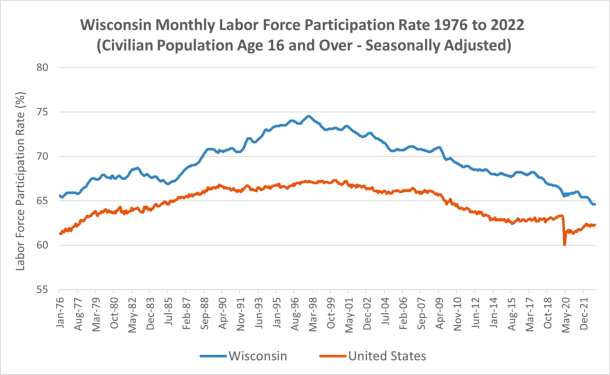The April 2023 data snapshot considered Wisconsin’s relatively high labor force participation rates (LFPRs) for individuals between the ages of 25 and 54 (i.e., prime working age individuals). Despite these high labor participation rates, some employers, policy makers and economic development professionals have expressed concern over the decline in Wisconsin’s total participation rate for individuals ages 16 and over. Indeed, an examination of Wisconsin’s labor participation trends from 1976 to 2022 shows that rates have declined over the last several decades from their peak in the late 1990s. To better understand the drop in labor force participation, we can consider how the age structure of the labor force has shifted and how participation rates within individual age groups may have influenced this change over past two decades.
Labor force participation rates vary considerably by age group. Specifically, rates trend upward from younger age groups to a peak among the prime working age group of individuals ages 25 to 54. Participation rates begin to decline for the 55 to 64 age group (pre-retirement) and drop significantly for individuals ages 65 and over. Rates within age groups also change over time. For instance, we can consider snapshots of how rates have changed across the last two decades through several economic periods: 1) the pre-Great Recession period between 2000 and 2007; 2) the Great Recession and subsequent recovery period between 2007 and 2014; and 3) and the more recent period between 2014 and 2021 which included both an economic expansion and the onset of the COVID-19 pandemic.

